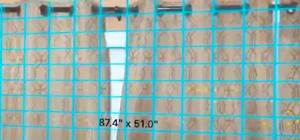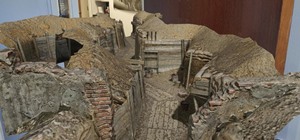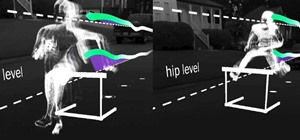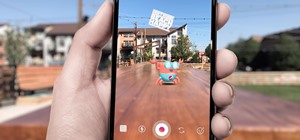While ARKit and ARCore are poised to bring AR experiences to millions of mobile devices, one company is poised to anchor those experiences anywhere in the world with just a set of geographic coordinates.
The geospatial augmented reality platform Aireal enables developers to place digital content indoors or outdoors based on latitude, longitude, and altitude instead of markers or computer vision. The company will offer a content management system (CMS) and software development kit (SDK) during the first quarter of 2018.
"The content management system will allow non-developers to create, deploy, and manage their own geospatial AR experiences. We'll have integrations in there with libraries of 3D models that makes it very easy to create a 3D geospatial AR experience," said Kevin J. Hart, founder and CEO or Aireal, in an interview with Next Reality. "The SDK, much like you would expect, will be compatible with technologies like Unity 3D as well as Unreal Engine, which will allow people with stronger development backgrounds to create a much more robust, interactive geospatial experience."

Aireal's patented geospatial system is a hybrid of visual-inertial odometry (VIO) infused with GPS to obtain coordinates and simultaneous localization and mapping (SLAM) and inertial measurement units (IMU) to map the immediate area. The combination of these techniques results in location accuracy measured in millimeters rather than meters on devices released within the last two to three years.
The platform achieves even greater location accuracy by amassing what Hart calls a "collective conscious," By generating point clouds from multiple users in an area, the platform gains a more dense data set and, in turn, a more robust understanding of the space.
In addition, Aireal's engineers have optimized the SLAM and VIO techniques to attaining processing through the GPU of up to 120 frames per second, whereas other platforms typically operate within 30-45 frames per second.
"SLAM was originally created for robotics on a Linux machine, so it has a lot more power behind it, but getting it on mobile really takes a toll on the CPU," said Hart. "We were able to figure out a way to optimize it, bring back onto the mobile device, but purely on the CPU side so we have full access to the GPU for the augmented graphics."
The device-agnostic platform also offers tools for generating a more realistic experience. Like ARKit and ARCore, Aireal accounts for lighting in its presented content. Moreover, it can apply environmental effects to content, such as making a flag flap from a westward wind, based on the weather at the user's location. Aireal can also use the device's front-facing camera to simulate reflections on metal, glass, or other reflective surfaces. It also factors in the location of obstructing buildings for an occlusion.
Target markets for Aireal include sports and entertainment as well as architecture. The Dallas, Texas-based company has already deployed their technology in apps for a number of early-access partners, including the College Football Playoff, NBA's Sacramento Kings, Maxim, Discovery Channel's Shark Week, United Nations, and others, as part their "pioneer program," which generates revenue for Aireal while providing feedback on their platform.


For the College Football Playoff Experience, Aireal was able to deposit holograms of the trophy and an overhead scoreboard on more than 100 university campuses. Users discovered the content through the dedicated iOS or Android app.
Aireal also assembled a similar experience last year for Maxim's Super Bowl party, where attendees could view AR art installations via the iOS and Android app.
Another example of the company's work is SOLAR, an iOS and Android app for the Science Channel that overlays an animation of the solar system in the user's space.

For sports in particular, Hart sees an opportunity to enhance the fan experience at the stadium by simulating the amenities of the broadcast experience. For example, a mobile app could display the yellow first down line and other superimposed graphics used during football broadcasts. Aireal can also create an experience similar to the forthcoming ARKit enhancements for the MLB At Bat app, which will give fans player statistics through their devices' camera view.
"When it comes to sports specifically, they're all facing this problem that fans don't want to come to the venue anymore because it's cheaper to stay at home, I've got a great seat, and I'm in the comfort of my own home," said Hart. "We can truly bring a broadcast experience to give it the live energy while you're at a live venue and still have that community feeling that you're surrounding them with people."
Another use case Hart proposes is integration into rideshare apps like Uber and Lyft, where Aerial would track the target car and identify it on the user's camera view.

In addition to licensing the CMS and SDK to developers and building customized AR experiences for clients, Aireal will eventually be able to monetize their platform is by selling volumetric digital real estate. Hart notes that, as part of the company's three-year product roadmap, customers will be able to purchase a geographic area in the same way they would buy a domain, place their own AR experience over that space, and access more than 70 metrics related to human behavior and engagement.
"Just like you have a heat map on a website, you can do a heat map of any geographic area, understand where users are moving, where they're moving when they interact with content, how long they are doing it, how many pictures or videos they are taking, how many of them shared to social media, even down to what speed they are moving at," said Hart. "That way, the content provider can contextually update the experience for the ideal audience."
Just updated your iPhone? You'll find new features for Podcasts, News, Books, and TV, as well as important security improvements and fresh wallpapers. Find out what's new and changed on your iPhone with the iOS 17.5 update.
























Be the First to Comment
Share Your Thoughts